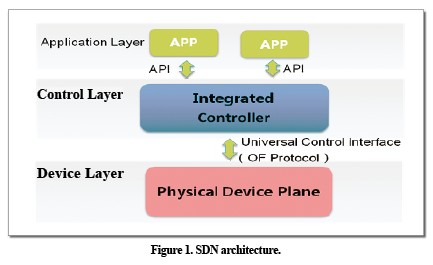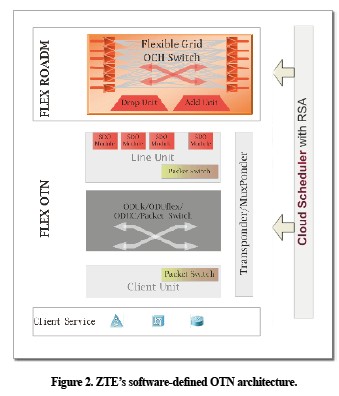Software-Defined OTN
Challenges for Traditional OTN
In recent years, new IP-based services have continuously emerged and the volume of global internet traffic has grown rapidly. According to Cisco’s annual visual networking index forecast, the compound annual growth rate of network traffic will reach 29 % by 2016, and global internet bandwidth will enter the Zettabyte era.
Operators have to face the challenges created by this surge in traffic, even though their revenues are not keeping pace. It is not realistic to meet traffic needs by linearly expanding the bandwidth of OTNs. Because of technology limitations, the bandwidth capacity of OTNs is limited for some time. It is therefore necessary turn to other resources to improve spectrum efficiency, reduce invalid traffic handling, and optimize networks.
Traditional OTN has a rigid-bandwidth pipe, fixed interface speeds, and fixed spectrum intervals. Operators are also faced with bursty traffic caused by new real-time services. OTN is simply not flexible enough for dynamic traffic. A more flexible, open network architecture is needed.
Software-Defined OTN
SDN concept
In a software-defined network, software controls the network and fully opens up network capabilities. This allows the network to change rapidly and easily through software upgrades. The key features of SDN are the separation of control and forwarding, centralized logic control, and open APIs (Fig. 1).

Architecture and function of software-defined OTN
A software-defined OTN has similar features to a software-defined network. Through flexible, programmable hardware, optical transport resources can be adjusted.
ZTE’s software-defined OTN architecture has FLEX ROADM, FELX OTN, and a cloud scheduler (Fig. 2).

FLEX ROADM supports colorless, directionless, contentionless and gridless (CDCG) features. It can switch between carriers of any granularity, between channels at any level, and between wavelengths or subcarriers with any spectral width. This provides great flexibility for efficient service bearing.
FLEX OTN provides flexible ODU/OTU encapsulation at variable rates. It supports any link rate with a granularity of 100G and also supports flexible modulation formats. The software-defined optical module allows for these variable rates and modulation formats. If traffic is not heavy, the system can be configured with lower rates. As traffic increases, the configuration can be altered through software. This allows the system to adapt to changes in traffic and application scenarios and the high cost of replacing functional boards is avoided.
Photonic integration and efficient DSP are key features of an SDO module. By balancing bandwidth, distance, and complexity, the SDO module achieves optimal spectrum efficiency.
The SDO module also provides cloud resource scheduling between line boards. Unused slots (optical modules) on one board can be used by another board, and multiple boards can form a line path. This allows resources to be flexibly used.
The cloud scheduler allows users to control all network resources and manage virtual devices and networks through SDN interfaces. With the routing and spectrum assignment algorithm, the cloud scheduler can schedule channels and subcarriers of any granularity, establish flexible end-to-end communication pipes, and adjust bandwidth according to real-time changes in traffic. These capabilities all improve network efficiency.
The value of software-defined OTN
Software-defined OTN can provide access to any service; it can switch services of any granularity; and it can transport on any bandwidth. It has a view of the whole network and can controls and optimize network resources in a centralized way. This helps maximize equipment use and reduce network construction costs.
Because software-defined OTN has universal hardware architecture that can be configured flexibly through software, the number of different boards and spare parts is reduced and this reduces OAM costs. The technical requirements in engineering and maintenance are lowered, and this allows services to be rapidly comissioned and deployed and hardware to be more easily maintained.
Software-defined OTN can also virtualize transport resources for multiplane multiuser virtual operation. Application providers can apply for and control appropriate network resources in order to offer applications with better quality guarantee.
Summary
Traffic storms, traffic bursts, and complex flows have put huge bandwidth pressure on traditional OTNs, which cannot meet dynamic service needs because of their rigid bandwidth characheristics. Software-defined OTN has been introduced to improve network efficiency. With open interfaces and the flexibility to optimize the whole network, software-defined OTN is an important development trend in the telecommunications industry.